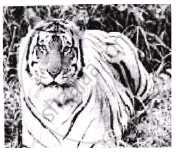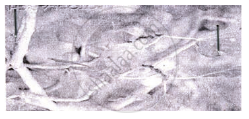Advertisements
Advertisements
प्रश्न
What is common to the species shown in figures A and B?
 |
 |
| A | B |
उत्तर
Both are examples for Keystone species
APPEARS IN
संबंधित प्रश्न
Species that possess a very high risk of extinction due to rapid population decline of about 50 - 70 % over three generations is designated as ______.
Match the following and choose the correct alternative.
| Column I | Column II | ||
| i. | Not evaluated | a. | Pervasive and abundant after careful assessment |
| ii. | Near threatened | b. | Information related to risk of extinction is lacking in some way |
| iii. | Least concern | c. | Described by scientist but not assessed by the IUCN |
| iv. | Data deficient | d. | May meet the criteria for threatened status in the near future |
Acronym for IUCN is ____________.
______ refers to the conservation of endangered species outside their natural habitats.
Species that possess a very high risk of extinction due to population decline of about 30 - 50 % over past 10 years are categorized as _______.
Accroding to IUCN Red list, the status of Antilope is ____________.
List any two major causes other than anthropogenic causes of the loss of biodiversity.
When a species goes extinct in one area, it is often desirable to re-introduce the species from other populations. A major problem with this approach is that ______.
Many species like Stellar's Sea cow and passenger pigeon have been driven to the brink of extinction. Which of the following describes this situation?
Write any three criteria on which different types of reflexes are based.
